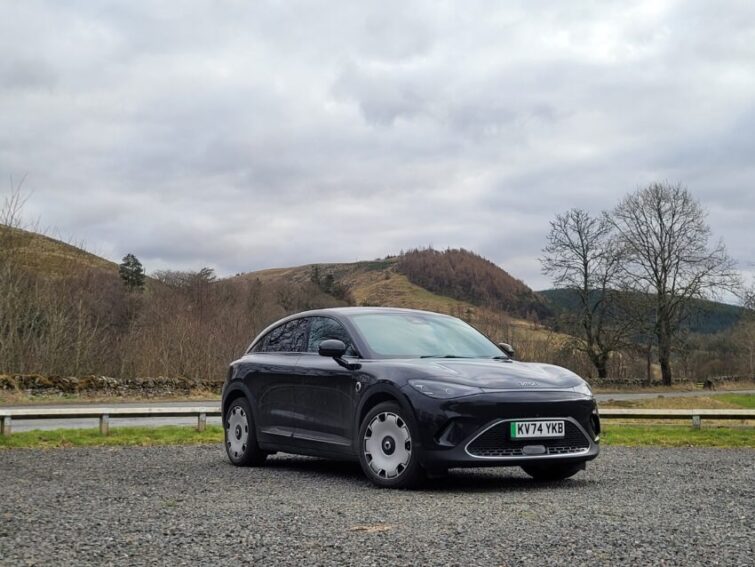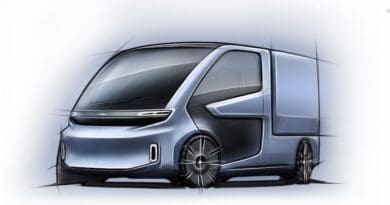
Smart #3 review
Does the Smart #3 have the style, performance and range to stand out among a variety of coupe-inspired electric crossovers?
Smart is undergoing a transition right now. Once famous for the tiny ForTwo, it’s about to launch its biggest ever car in the shape of the #5 SUV.
But the change has been happening for a while. The #1 compact SUV arrived in 2023 and a year later it was followed by the Smart #3, a coupe crossover with few obvious rivals but plenty of ambition.
The Smart #3 occupies an odd space. It follows a similar philosophy as the Skoda Enyaq Coupe or Volvo EC40 but on a smaller and cheaper scale. So is there a place for it in the ever-growing EV market?
Design, interior and technology
The Smart #3 is based on the same underpinnings as the #1 and, like the Ford Capri or Volvo EC40, takes the boxy SUV shape and replaces it with a swoopy coupe-inspired body. This isn’t just a new back end, though. While the curvy, bubbly front end is very similar to the #1’s, the #3 is wider, longer but lower than the SUV. And it works really well. There’s a hint of the Mercedes EQ range’s soapbar style but enough small touches and characters to appeal rather than repel.
While it looks quite different outside, inside the #3 looks and feels very much like a #1. It has a similar high-set centre console that flows out into the curvy lines of the dashboard. There’s a phone storage cubby and cupholders and a hard-to-access lower level, plus a slimline digital instrument panel slotted neatly within the lines of the dashboard. Everything is finished in materials that lie at the higher end of mainstream quality. Our test car featured a silver plastic finish rather than the glossy white of the #1 for a more sophisticated feel, enhanced by the brown and black leather upholstery.
At 4.4m long with a 2.78m wheelbase, the #3 sits at the larger end of the ‘compact’ segment so there’s good rear space for average sized adults, although the sloping roof makes it feel less spacious than it might. The 370-litre boot is smaller than some similarly sized SUVs, although the different shape means it feels just as usable as the 416 litres in the #1.

While the #3’s cabin is a nice place to sit, it suffers with the same troublesome infotainment system as the #1. The screen is big and responsive but in its native mode it’s covered with a smorgasbord of largely useless graphics. You have to navigate multiple menus to adjust everything from your wing mirrors to the hateful ADAS systems. Using the wireless Android or Apple mirroring gets rid of the distracting graphics but also means your air conditioning controls completely vanish.
On those ADAS systems – they’re inaccurate and overbearing, and reactivate every single time you stop the car, requiring a merry tour of the touchscreen to switch them all off again.
Battery, motor and performance
The Smart #3 comes with a couple of powertrain options. Every version except the silly Brabus gets a 268bhp motor driving the rear wheels. The difference is with the battery. Entry-level Pro models get a 49kWh LFP pack good for 202 miles while Pro+ and the Premium I drove get a 66kWh NMC unit offering up to 283 miles and 150kW charging.
The 268bhp gives a 0-62mph time of 5.8 seconds, which feels suitably rapid but not brutally so. There’s power on tap whenever you want it but the #3 doesn’t feel overpowered for its chassis. In fact, it feels nicely matched to the car’s road manners.
Often, such crossover EVs fail to deliver on the driving front but the Smart #3 is actually a surprisingly nice thing to drive. It has a pleasingly supple chassis that feels at home on the twisting and undulating roads of the Borders.

Steering is crisp and quick and with decent weight. It feels almost redundant to say the electronic assistance lacks feedback (it’s true of virtually all modern cars) but it does. That said, knocked into sport mode, the #3 will cut a cross-country path with commendable control and agility.
And even taking advantage of its driveability, the #3 still returned a decent 3.25m/kWh in real-world use.
Sadly, the driving experience is let down by the poorly calibrated regenerative braking which feels inconsistent in when and how firmly it chooses to kick in. That’s despite having three defined settings. And don’t get me started on the one-pedal driving. It’s bad enough that it leaves you drifting into junctions long after any other system would have stopped the car. What’s worse is that deactivating it throws up a confirmation message that blocks the entire touchscreen for 10 seconds.
Suffice to say, after trying the various permutations, I set the regen to its lowest level and got used to using a brake pedal again.
Smart #3 price and specification
Prices for the Smart #3 start at £33,960 for the ‘basic’ Pro model. This still features a generous specification that includes auto-dipping LED headlights, a panoramic sunroof, powered tailgate, power adjustable heated seats, heated steering wheel and adaptive cruise control.
The Pro+ spec simply adds the bigger battery for an extra £4,000. Above that, the £40,660 Premium gets gesture control for the tailgate, adaptive headlights, interior ambient lighting, a head-up display, dual-zone climate control, a Beats sound system and a heat pump. It also gets a broader range of personalisation options, so there are far more exterior paint and interior finish choices.
Verdict
The Smart #3 is a thoroughly likeable and enjoyable car hamstrung by a couple of fixable problems.
It looks good and has an interesting, comfortable and deceptively spacious interior. It’s genuinely nice to drive, offers decent range and efficiency and is well-equipped.
It’s just a shame the sub-standard user interface, infuriating driver ‘assistance’ and poor braking regen control can’t match the quality on display elsewhere.

Smart #3 Premium
- Price: £44,660
- Powertrain: single-motor, rear-wheel-drive
- Battery: 66kWh
- Power: 268bhp
- Torque: 253lb ft
- Top speed: 112mph
- 0-62mph: 5.8 seconds
- Range: 283 miles
- Consumption: 3.8m/kWh
- Charging: up to 150kW





